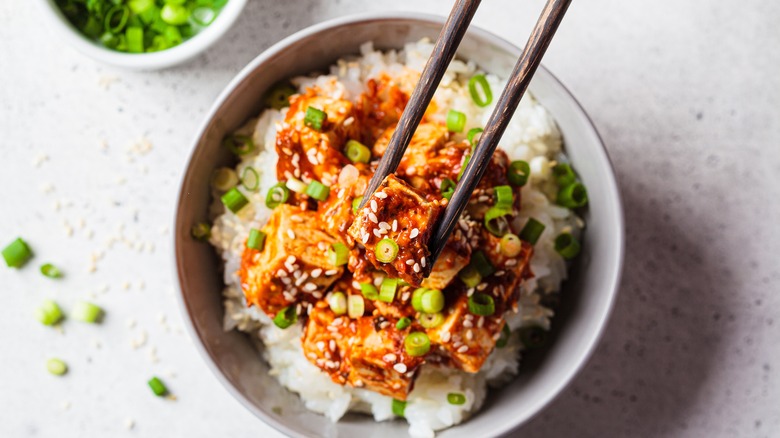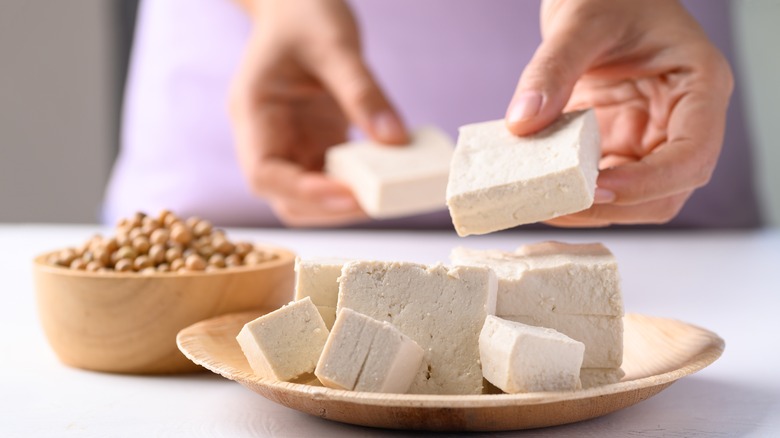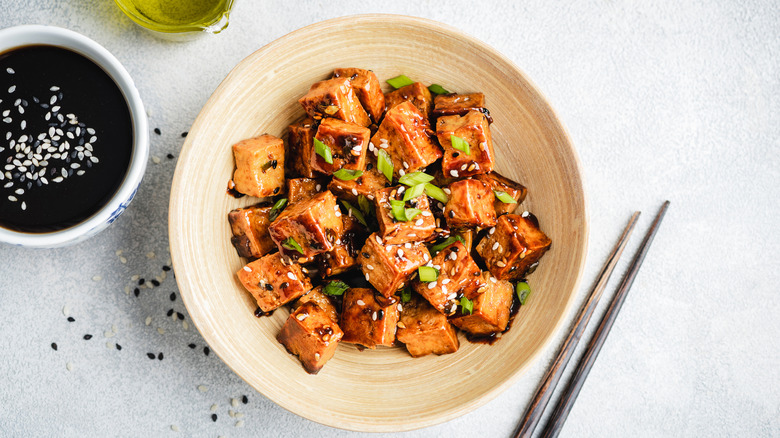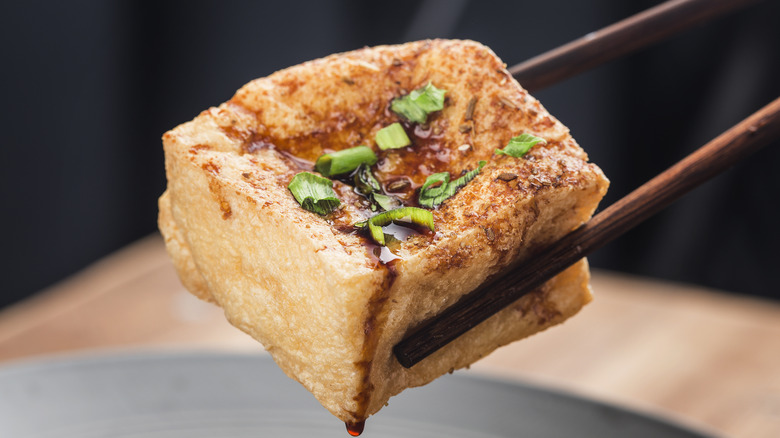What Is Braised Tofu And How Is It Served?
When it comes to vegan-friendly eating, few ingredients are as adaptable as tofu. From chocolate mousse to fried tofu bites, the sky is the limit for innovative applications. And while there are many creative interpretations, stir-frying is a reliable choice. Simply combine the soybean product with an assortment of vegetables, and aromatics, concoct a sauce, and dinner comes together in one pan. The main struggle with the technique is achieving a mouth-watering, crispy texture while still containing a sauce.
To attain that perfect bite, consider braising tofu — a technique common in China and Korea. Similar to braising meat, the tofu is cooked to a crispy texture on the outside while still bathed in a delectable sauce. The dish can be prepared with any tofu type, and the additional sauces and components are seemingly endless and customizable to your taste. So let's dive into braised tofu's ingredients and techniques — it's a dish not to miss.
Ingredients in braised tofu
As per the name, this dish starts with tofu. The type varies based on cuisine and preference. In China, silken tofu is the common base, yielding a dish with a soft, almost custard-like interior. Alternatively, Koreans reach for firmer varieties of tofu, which are also easier to work with. There is no incorrect choice of tofu to use; variations are common, even exclusively in Korean cuisine.
The cooking fat and braising liquid also differ, encouraging experimentation when preparing this dish. The Korean version incorporates gochugaru, the dried chili base in gochujang, along with sugar, salt, soy sauce, and water. In Chinese cuisine, soy sauce is also a key component, with light and dark varieties mixed with oyster sauce and chicken broth.
Additional aromatic, including garlic, onion, and sesame oil, are common in both renditions. And especially in the Chinese version, additional vegetables like bamboo shoots, carrots, and mushrooms can be braised alongside the tofu. The dish is a perfect canvas for braising a vast medley of components — as long as the technique is perfected. So how does braised tofu come together?
How braised tofu is made
Similar to braising meat, this dish starts with a pan-fry that is finished with a liquid. The tofu is placed into hot oil, seared until crispy, and then removed and dried on a paper towel. Unlike with meat, the browning of the tofu does not contribute to the sauce's flavor. Next, aromatics and veggies are fried, and the braising liquid is added to the pan and allowed to caramelize. Finally, the tofu is folded back in and melded with other components before serving.
Especially when using silken tofu, attaining the perfect texture can be difficult. For that reason, it's essential to drain excess water out of the tofu and combine ingredients with care. Allow silken tofu to sit on a plate before draining the liquid, and press down firm tofu with a paper towel. And finally, keep an eye out for the oil temperature to ensure it stays between 375 and 400 degrees Fahrenheit for a successful crispy golden exterior.
Korean vs. Chinese braised tofu
These two cuisines have distinct differences in how the dish is prepared and consumed. The Korean version, called dubu jorim, usually contains fewer components and is eaten more like a side dish, known as a banchan in Korea. It's a staple in school lunchboxes, accompanied by rice and other small bites. It typically contains less sauce, with a thicker, paste-like mixture coating the tofu. And, like with many other Korean dishes — it's dependably spicy.
On the other hand, Chinese braised tofu encompasses more ingredients, especially veggies, and is typically a dish ordered at restaurants. The sauce is more liquid and usually contains cornstarch, yielding a slurry-like texture popular in Cantonese cuisine. As a large country, the dish includes many variations, whether a Sichuanese version loaded with chili bean paste or an Indonesian-Chinese fusion served in a clay pot. Such a range means incorporating new components is encouraged, whether it's bok choy or bell peppers.



